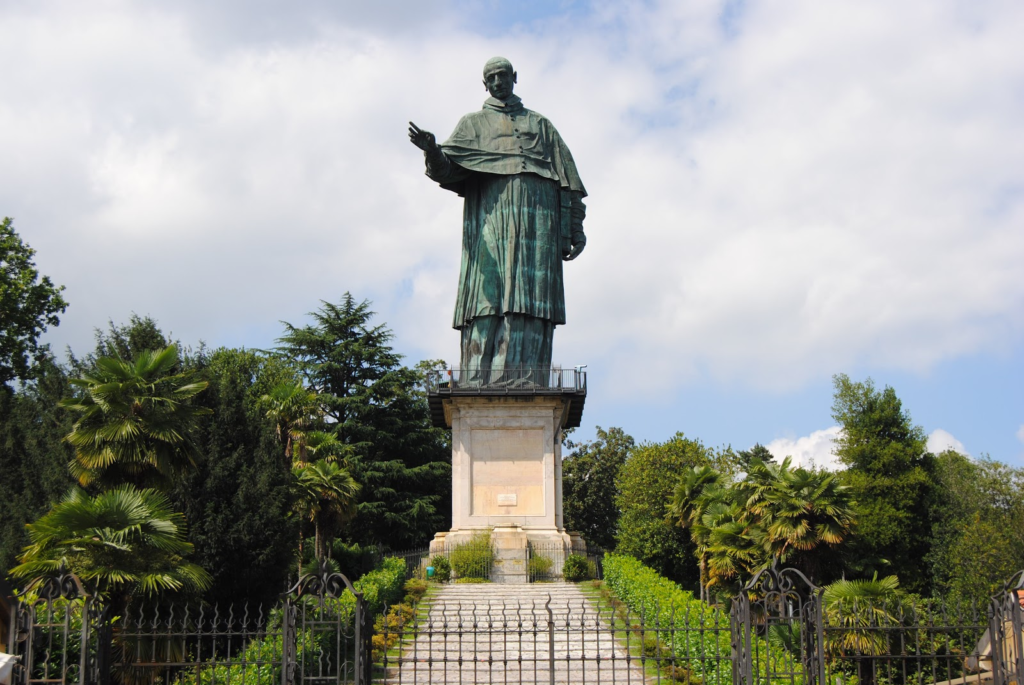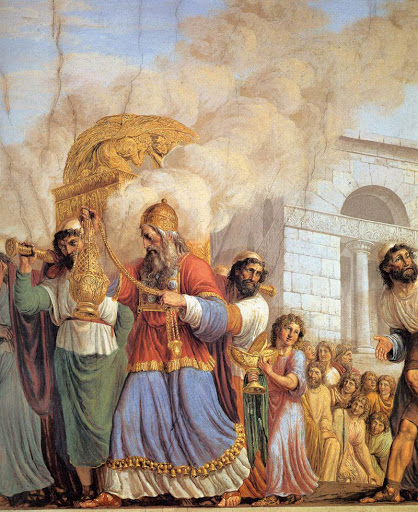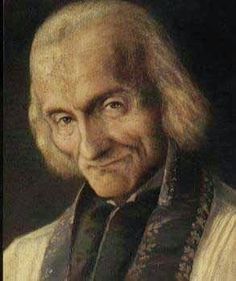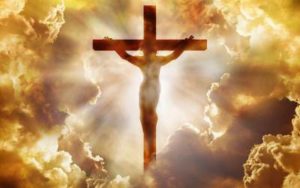Don’t Shun the Process: Eucharistic Processions and Reparation
Throughout the month of June, we celebrate Holy Mother Church’s devotion to the Sacred Heart. On Corpus Christi, some parishes have wonderful Eucharistic processions. One might wonder, why are there processions for this feast day and not others? Why have Eucharistic processions & other processions of reparation given way to processions of celebration?
The duty for reparation is provided in the solemn teaching of Pope Pius XI in the encyclical Miserentissimus Redemptor published in 1928:
For if the first and foremost thing in Consecration is this, that the creature’s love should be given in return for the love of the Creator, another thing follows from this at once, namely that to the same uncreated Love, if so be it has been neglected by forgetfulness or violated by offense, some sort of compensation must be rendered for the injury, and this debt is commonly called by the name of reparation.
Miserentissimus Redemptor
The current Catechism of the Catholic Church requires reparation for offenses committed against justice and truth, even if the individual has been forgiven (CCC 2487). This is explained as a duty to make amends towards someone for an act of false witness against someone (the Eighth Commandment). However, it remains silent on the duty of reparation for public sin and the false witness against God Almighty Himself and of all things sacred!
THE PROS OF PROCESSIONS
The first procession of reparation was probably a solitary one. According to accounts of mystics such as Ven. Mary of Agreda, the Blessed Mother retraced the Via Dolorosa (the Way of the Cross).
Apostolic tradition continued the veneration of the passion as an act of sorrow for sin and reparation. In the third century, it was common for Christians to pause at 3:00 in the afternoon and meditate on the Five Wounds, particularly the piercing of Jesus’ side.
One of our earliest examples was a procession ordered by Pope St. Gregory VII (the Great) in 590 A.D. during the Great Pestilence of Rome. Seven different processions divided by people of different orders and states in life went through the streets of Rome, converging on the Basilica of St. Mary. Such great faith was on display by the numbers of people and their bold display of reverence! At this time, we did not yet have the Devotion to the Sacred Heart given to us. However, the litanies that were recited at this time expressed those same spiritual truths later encapsulated in the Litany to the Sacred Heart. Source: Angelus Meditations on the Litany of the Sacred Heart of Jesus, Pope John Paul II, Our Sunday Visitor, 1992.
Many including the Pope reported seeing the miraculous appearance of an angel sheathing his sword, which was interpreted by some as the “angel of death” being restrained by this action. There was sufficient witness of this miracle that both a tower and a bridge were renamed to honor the unnamed angel (Castel Sant Angelo and Ponte Sant Angelo). Source: The Renaissance in Italy: A History, By Kenneth Bartlett.
Since then, processions and litanies to the Sacred Heart or the Blessed Mother became a standard response by the Church to the outbreaks of plagues.
In 1340 in Florence Italy we have a good example of a grand procession led by a miraculous relic of the Precious Blood in response to a surging pestilence. The observance of a comet coinciding with a plague had caused the faithful to believe the pestilence was a result of divine punishment. (The processed relic traced back to the region about a century earlier. In 1230, a priest had failed to wipe the chalice of remains of wine left after the Eucharist. The next morning it was found changed to blood. The chalice and the blood became a revered relic.) After a great religious procession was made of the relic and chalice , the plague subsided. Source: The Renaissance in Italy: A History by Kenneth Bartlett.
The book Public Life in Renaissance Florence by Richard Trexler, gives us a glimpse of the once great public use of processions in Italy. During this time, processions were held for any number of different crises. Processions were held on average once a year but could include two or three in a year. The procession could be limited to a day but sometimes they were held as three-day penitential marches, or even some went to correspond to the length of a novena!
In 1432, there was a massive procession to avert famine and war. All the religious of the city processed for ten days followed by a procession of the faithful for nine days. A humanist scribe notes that the faithful processions were limited in numbers in the earliest days but became more numerous by the third day as the population began to realize the momentum of the event and that results were being achieved.
These processions were typically divided by sex. Interestingly the author notes that:
“…Sexual divisions of the church (were) absolutely enforced. Just as laxness in maintaining distinct sexual roles and dress might be the cause of the crisis (emphasis added), its solution, the preacher could tell his audience, lay in processionally manifesting sexual clarity to the divinities. Each sex had a role to play in resolving the crisis, and only once…were women excluded both from sermon and processions during a crisis. But they would play this crucial role clearly marked off and separate from men.” (p.359)
Public Life in Renaissance Florence
THE RECESSION OF PROCESSIONS

Statue of St. Charles Borromeo at His Birthplace of Arona, 1624
In the later medieval times, the Church and authorities sometimes clashed at the idea of public processions for reparation. During a plague in 1567 that ravaged Milan, St. Charles Borromeo claimed that God permitted it as a punishment for the sins of the people. In their efforts to curb the contagion, the civil authorities had forbidden religious gatherings including processions. Most people willingly quarantined themselves in their homes. St. Charles opposed them for putting their trust solely in practical remedies, without a thought for the divine. However, St. Charles was able to maintain a focus of reparation by the erection of crosses in the street junctions so that people could be mindful of observing and participating in public rogations from their windows. Masses were also offered in the streets for people to observe from their windows. Source: SSPX.
MARSEILLES LEADS THE WAY
In the 17th century, the Devotion to the Sacred Heart was established by St. Mary Margaret Alcoque and continued by Sister Anne-Madeleine Remuzat founding the Confraternity of the Sacred Heart. The association received Vatican approval in 1717. The following year, about 60 people who gathered for adoration at a local church saw the face of Christ in the Host for more than half an hour. At that time God revealed to Sister Anne-Madeleine that if the city of Marseille did not repent from its immorality, it would be punished. In 1720, a bubonic plague broke out.
The Bishop of Marseille instituted a solemn feast and consecration to the Sacred Heart in the Diocese on Nov. 1, 1720. An altar was set up for mass in the public square. However, that day the wind blew so hard it was impossible to hold a procession. But in the evening, all the city’s church bells were rung, and the wind moderated. The bishop was able to perform the consecration and celebrate Mass in the public square, most likely the first official public consecration to the Sacred Heart. Various public penitential activities were performed in the following month. The pestilence began to diminish by the end of the year. But the people did not reform their lives; and the plague reappeared in 1722. The bishop ordered processions for Corpus Christi and the new feast of the Sacred Heart.
The city aldermen who hadn’t attended the 1720 consecration and Mass, did participate in the 1722 processions. The plague ended completely that September. The Marseille officials published this declaration in 1722:
“When every human effort had hopelessly failed, prayers and acts of religion had arrested the hand of God. For all had ocular demonstration that the plague not only decreased but had actually ceased from the very day on which (the Bishop) de Belsunce had consecrated Marseilles to the Sacred Heart of Jesus.”
The Catholic Fireside Companion,” By Catholic Writers of the Past
Manual for Eucharistic Adoration
***Use coupon code BSA for 15% off.
THE REPRESSION OF PROCESSIONS
Closer to our times, the influenza pandemic of 1918-1919, also known as the “Spanish Flu,” was one of the worst pandemics in history. An estimated 50 million deaths worldwide were attributed to it, far more than the total casualties of World War I. In the United States, deaths from the Spanish flu were estimated at around 675,000. In every State, all places of public gathering were closed to prevent spread of the disease, churches included. The ban was obeyed and churches were closed. This could be the first example of Modernism having fully infiltrated the Church, setting a precedent for the Covid19 pandemic church closures.
VATICAN II: EUCHARISTIC PROCESSION REGRESSION?
After Vatican II, Eucharistic processions were de-emphasized and even suppressed, such as the traditional procession of the Feast of St. Mark. Processions became understood more as an outward sign of faith and means of celebration (such as Corpus Christi) rather than a public act of reparation, a plea to avoid the consequences of natural disasters or a plea to God for some other source of divine assistance. One theologian observes:
The theology and practice of “reparation” as it relates to the Sacred Heart of Jesus has been rather largely and unfortunately ignored in most theological circles since the Second Vatican Council. All too often it has been relegated to the category of “pre-conciliar pious devotions” by theologians and sometimes even by religious communities which were originally founded with reparation as one of their fundamental ends. Not a few theorists today would claim that the idea of reparation, as it was once known and practiced in the Church until the time of the Second Vatican Council, has been appropriately replaced by the “option for the poor” or some other form of apostolic outreach. Source: “
The Teaching of Pope John Paul II on The Sacred Heart of Jesus and The Theology of Reparation” by Monsignor Arthur Burton Calkins
While the love and use of processions continues to a degree in some parts of the worlds, most notably those countries with Catholic public holidays, it has largely fallen out of favor in the majority of modern Catholic Churches in the USA. Why then did the Church move away from our past traditions of processions of reparation?
One can only guess why? Because it’s too bold? Too Catholic?
Do we believe that the sins of mankind weren’t as bad as once believed?
Could it be the arrogance of our technological advance and prosperity?
Are we no longer so dependent on God for the providence of a good harvest?
With our meteorological and seismic early warning systems, do we no longer fear earthquakes, volcanoes and other natural disasters as we once did?
Based on medical advances, did we no longer feel the need to implore our God to mercifully end devastating plagues?
One might attribute this to the post-conciliar Protestantization of the Church. However, we shouldn’t assume processions would be abhorred by Protestants. We find a number of scriptural references to processions including those led by King David and the prophet Ezra. One might even argue Protestants might actually be somehow predisposed to the concept of processions.
This is seen, for example in 2 Corinthians 2:14, where from the Latin Vulgate:
“God, who always makes us to triumph in Christ Jesus and manifests the odor of His knowledge by us in every place.…,”
is somehow rendered in many modern Protestant translations as referencing a procession, such as:
“But thanks be to God, who always leads us in triumphal procession in Christ and through us spreads everywhere the fragrance of the knowledge of Him.”(NIV).

We might think the post-conciliar Church has officially moved away from it embrace of processions. However, we still can find some encouraging elements in the Church that are favorably disposed to processions. Note this instruction from the Congregation for Divine Worship and the Discipline of the Sacraments:
From a theological perspective, it is important to emphasize that a procession is a sign of the Church’s condition, the pilgrimage of the People of God, with Christ and after Christ, aware that in this world it has no lasting dwelling. Through the streets of this earth it moves towards the heavenly Jerusalem. It is also a sign of the witness to the faith that every Christian community is obliged to give to the Lord in the structures of civil society. It is also a sign of the Church’s missionary task which reaches back to her origins (emphasis added) and the Lord’s command (Mt 28: 19-20), which sent her to proclaim the Gospel message of salvation.”
CONGREGATION FOR DIVINE WORSHIP AND THE DISCIPLINE OF THE SACRAMENTS, “Directory on Popular Piety and the Liturgy,” Vatican City, December 2001
LAY CLAIM TO EUCHARISTIC PROCESSIONS
We need not rely merely on following our faltering Church leadership with regard to processions and reparation. To date, one of the largest of public processions in the author’s home area (Detroit, Michigan) in the modern post Vatican II era was not even initiated by the Church but by a lay organization! In 2016, a small men’s apostolate known as Invictus Christus working in conjunction with St. Paul Street Evangelization (with promotional help from Catholic media watch dog Church Militant, was able to mobilize over 600 men to process 2.5 miles through the streets of suburban Detroit.
The purpose of the procession was to offer public reparation for sin. This author took place in this march and observed people on the street dropping to their knees as the processed Blessed Sacrament passed by. You can read more about it in the Detroit Catholic.
*** Use coupon Code BSA for 15% off Select TAN Books Titles
PRO SESSIONS OF PROCESSIONS NEEDED
In conclusion, we need not do processions with reparation, such as to the Sacred Heart for its own sake, as if it were some liturgical prescription to fall within the calendar year. No! Rather it is a most efficacious remedy for desperate times, such as during droughts or plaques. In our arrogance, we should never think that we no longer need to resort to the public acts of reparation, such as a procession and consecration to the Sacred Heart.
As the Coronavirus “plague” overtook the United States in 2020, the world was humbled in realizing despite all the medical and technological advances, that it was not immune to the plagues of our past. Our leaders and the media took great interest in making fighting the plague a major cause, even though the infection and mortality rates were far below the numbers of historical plagues. Worldly remedies such as social distancing, masks etc. became the world’s response. It even became a celebrated part of “Political Correctness.”
Where was the equivalent response from the Catholic Church? Because of the impact of the error of Modernism on the Church, little consideration was given to bold divine actions in favor of practical worldly actions. As such, the Catholic Church mothballed one of its traditional historical remedies, procession and consecration to the Sacred Heart procession, closed Her doors and stayed in hiding indoors. We saw the Church passively offering a few extra masses to ask God for a quick end to the pandemic rather than taking to the streets in prayer. What a lost opportunity not only to make an inspiring act of faith! What a lost opportunity to evoke the power of public prayer and possibly allow God an opportunity to move and end the pestilence! Imagine the power and witness of 100s or even 1000s of people marching behind the Blessed Sacrament or a major relic singing and praying.
We need to learn our lesson of humility from the travails of 2020. We are not as immune to plagues, natural or man-made disasters or other harmful phenomenon as we think we are. As our culture becomes more enflamed with pride as a result of our knowledge, technology and prosperity and unthinkably more sinful that any time in world history, we must respond in kind accordingly!
God might not send plagues or other disasters as punishment for sin. To what extent He does, we might never know. However, we do know that the proud must become humbled (Proverbs 11:2) and the wrath of God is revealed from heaven against all ungodliness and injustice (Romans 1:18).
Recalling the past traditions and successes of the processions of reparation should remind us of this most valuable remedy. We should also understand what a powerfully unifying act of faith and means of evangelism this is. Our sexually ambiguous and confused culture needs to see the witness of processions of large groups composed solely of men or solely of women praying.
We might be tempted to dismiss the past traditions of medieval times as if somehow God had changed and no longer works miracles or gives us bold divine remedies. Such little faith we have! Medieval times may seem like ancient history to us, but for God, it was like mere seconds ago!
HOW ABOUT A SECOND WAVE (OF EUCHARISTIC PROCESSIONS)?
As of this writing, many of our leaders and media would have us believe the Coronavirus is not fading from the summer heat as many may have expected (rightly or wrongly). The Lord only knows if and how bad any “Second Wave” of infection might be this fall. In addition, every despot dictator and aspiring terrorist has seen the fearsome power of a virus being economically and politically weaponized and unleashed on the world. Thus, it’s not likely that pandemic pestilences will continue to be to more of a once in a century event as we have seen in the past.
After reading this article, I hope the reader is inspired to appreciate the value of processions of reparation. We should encourage our Pastors, Bishops and our fellow devout faithful to consider bold public acts of reparation, including processions and consecration to the Sacred Heart: Either upon the onset of such tragedy, or more preferably, to anticipate and try to prevent these future tragic outcomes!
Most Sacred Heart of Jesus, Have Mercy on Us!
This article was originally posted in 2020.
- St. Anne: Grandmother of the Church & Catholic Saint of Fertility - July 26, 2024
- St. Joseph: Unleash the Terror of Demons - March 19, 2024
- Two Candles, Two Doves and a Sword| Feast of Candlemas 2024 - February 2, 2024
Further Reading
- 100 Holy Hours for Women
- The Catechism of the Catholic Church
- Miserentissimus Redemptor (Amazon), Free
- Manual for Eucharistic Adoration
- Public Life in Renaissance Florence
- The Renaissance in Italy: A History
- The Teaching of Pope John Paul II on The Sacred Heart of Jesus and The Theology of Reparation” by Monsignor Arthur Burton Calkins
- Vie De La Veneree Sceur Anne- Madeleine Remuzat… (French Edition)
- The Way of the Cross by Alphonsus de Liguori












Thank you. Enjoyed reading this article. So insightful and relevant to this time.
Thanks! It means a lot to me to know that people take time to read an article–especially a long one! God Bless!
Great article! I wish our priest would hold processionals!